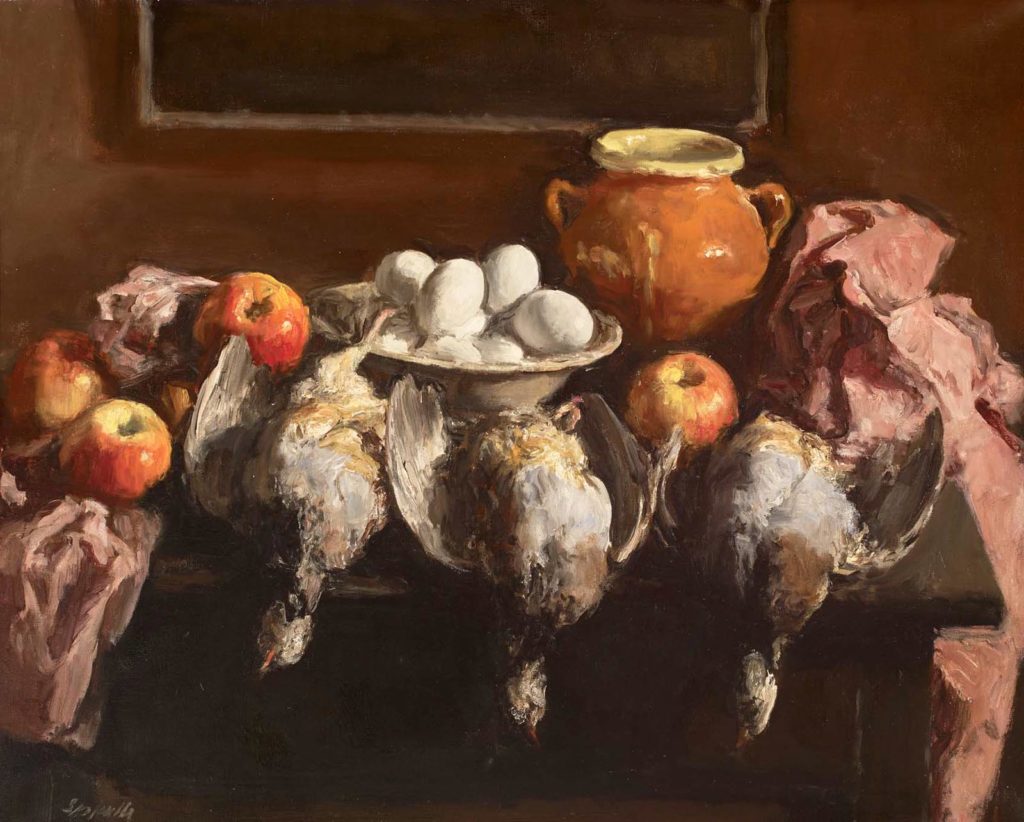Despite his reputation as a portrait painter, he was a painter who cultivated still life, an admirer and debtor of Cézanne, as well as the Baroque authors. This still life with three upside-down partridges, dish with eggs, two-handled pot, apples, table cloth and background picture, like his still lifes in general, follow the traditional symbolism of still lifes, vanitas, the feeling of emptiness insignificance, the constant presence of death, the flawless passage of time.
From his first simple fruit still lifes, they became more complicated, and from the Spanish Civil War, dead animals appeared, small game birds such as partridges or pheasants.
His artistic training took place between the School of Fine Arts in Llotja and the classes of Francesc Labarta at the Municipal School of Arts and Crafts. Chronologically, he belonged to the Generation of 17. Specifically, he was linked to the group The Evolutionists, whose aesthetic postulates were earthy colors, impastos indebted to Cézanne’s technique, construction of three-dimensional space and dense atmospheres.
He spent a season in Paris in 1927. Disillusioned with the avant-garde path, in 1928 he destroyed all his cubist works and returned to realism, which he would defend in theories and texts by publishing, in 1954, the pamphlet entitled Decorativismo y realismo. Dehumanization and humanization of modern painting, where he makes a fierce defense of figurative art against art. abstract, where he defended a new humanization of painting.

